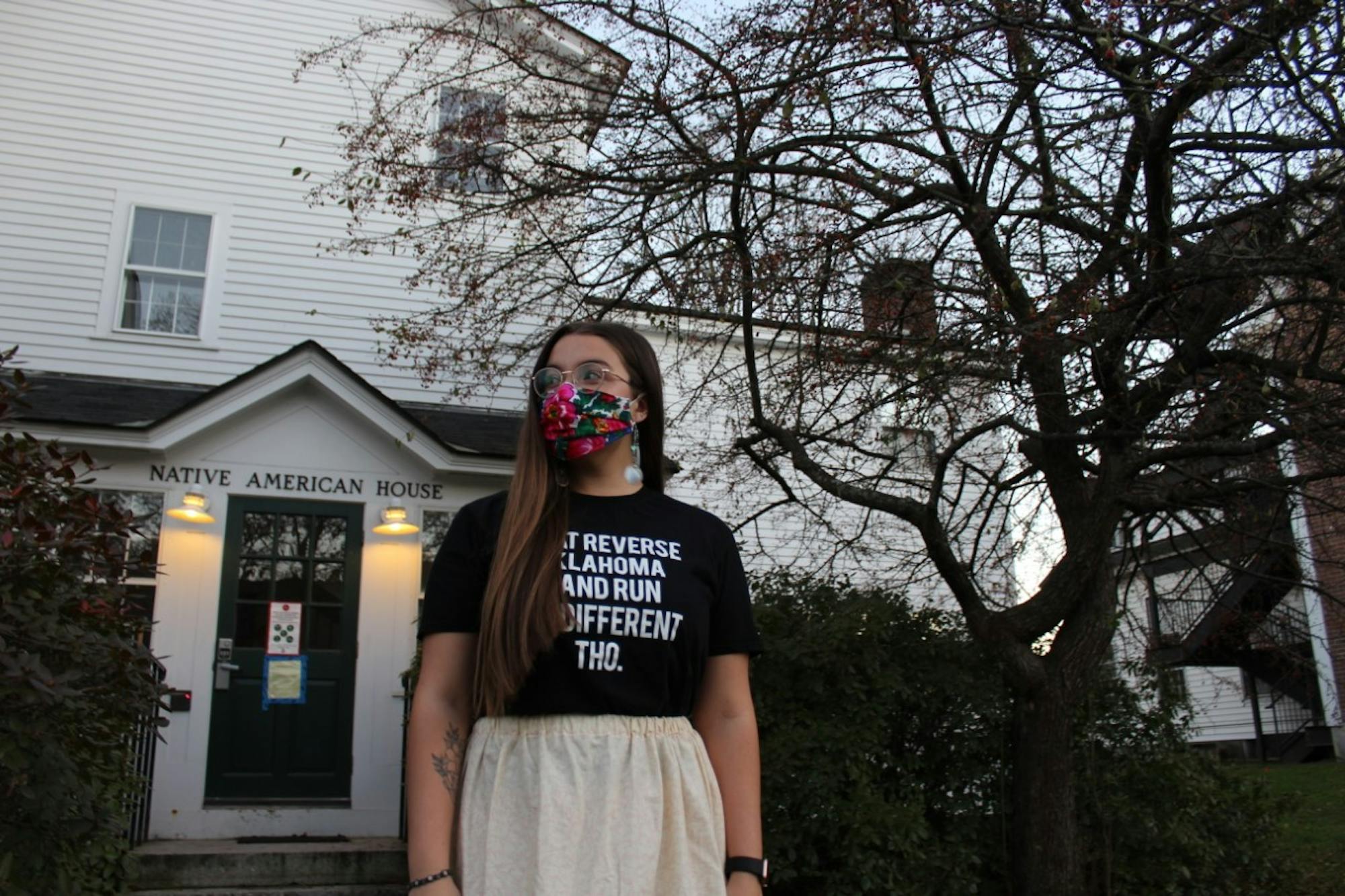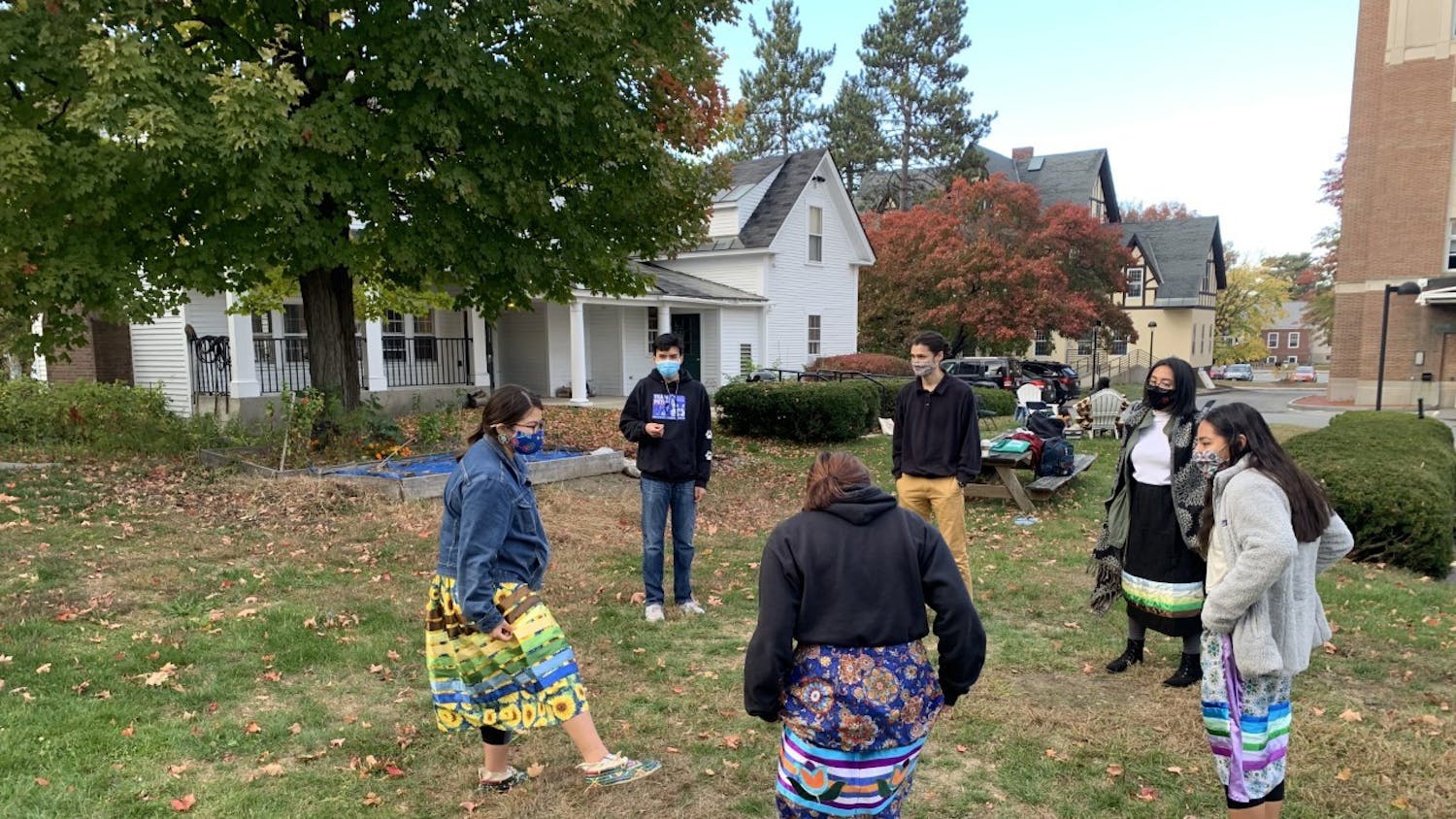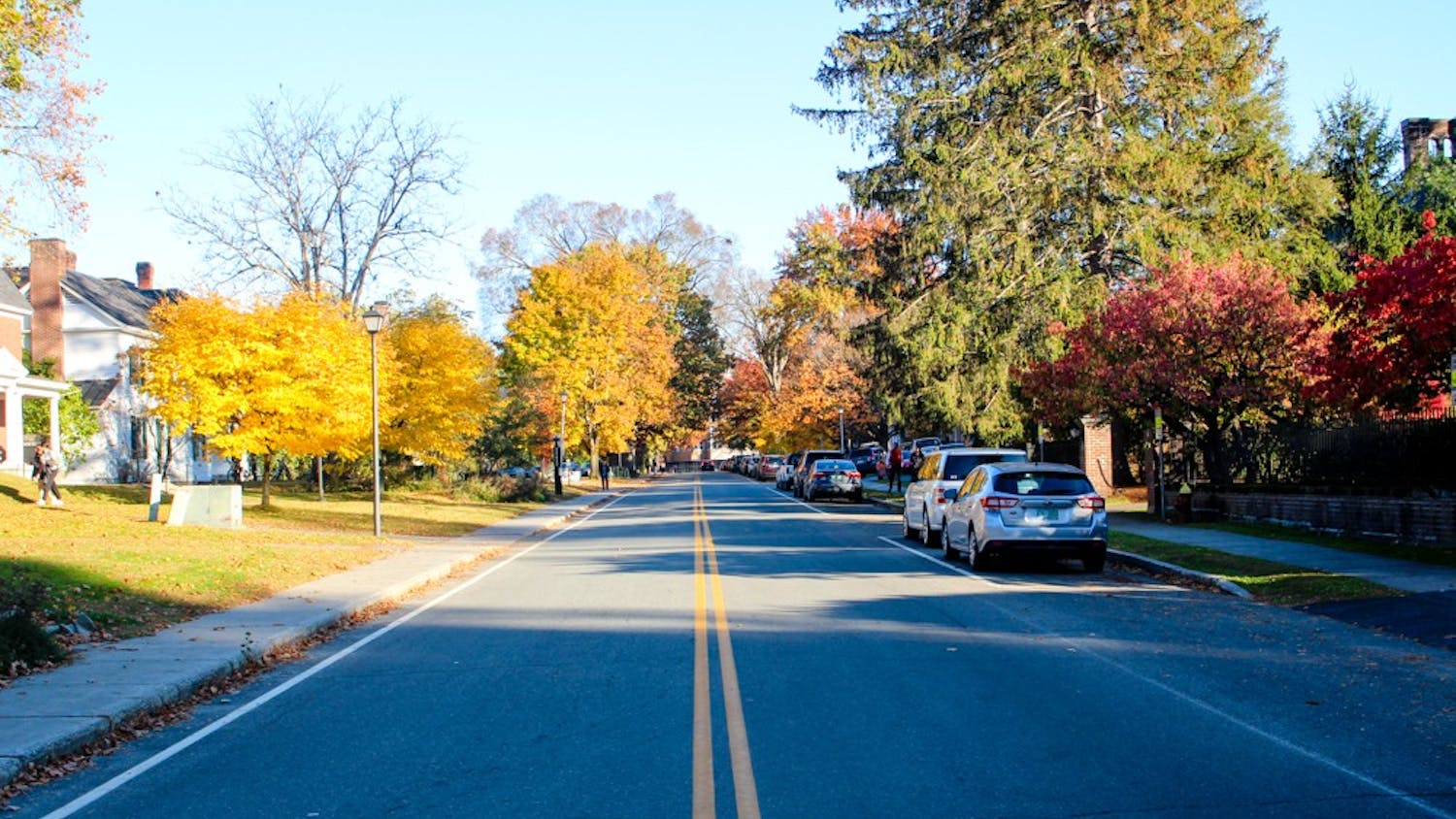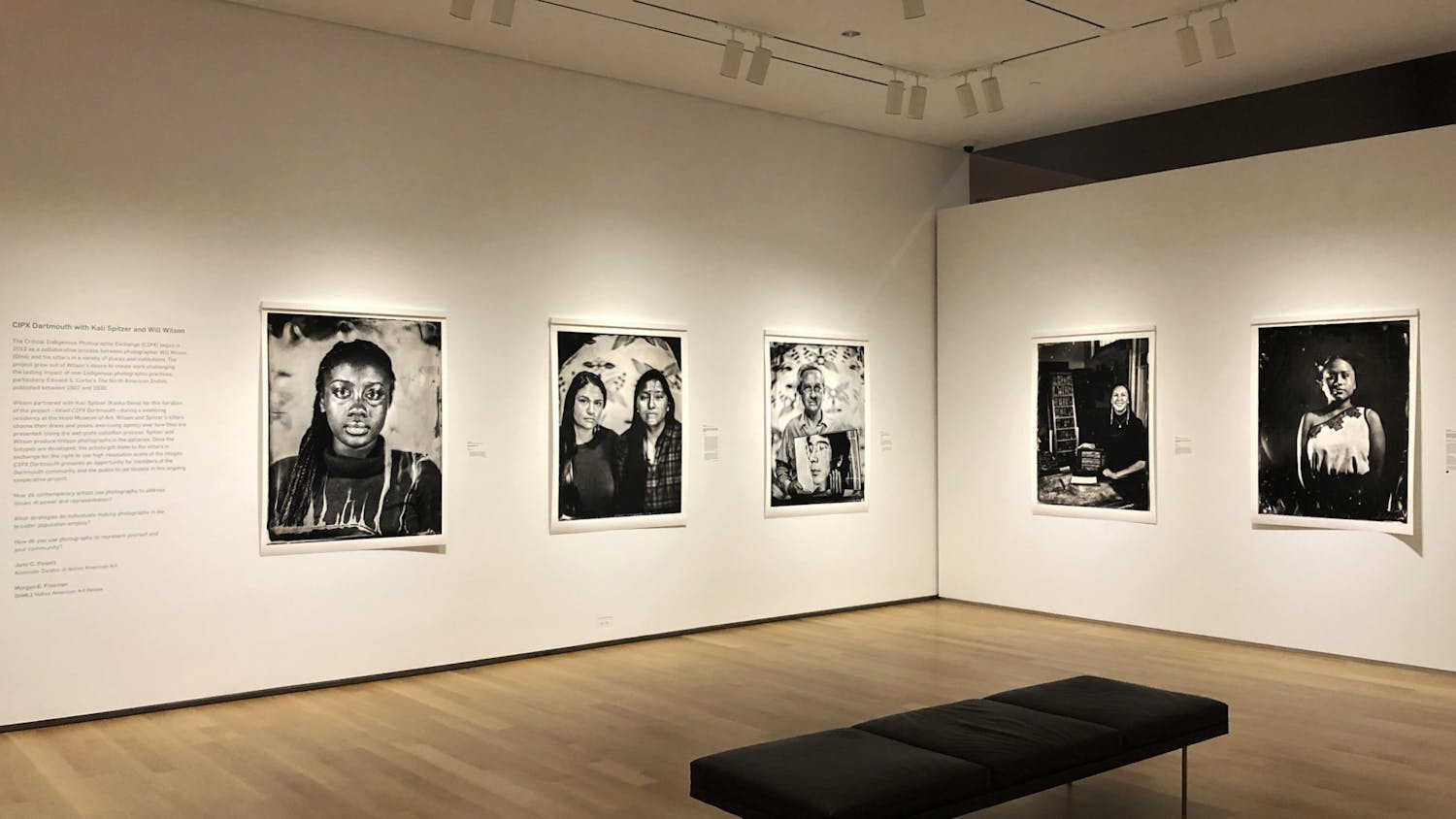On Friday, students strutted down the virtual runway in the College’s second annual Indigenous Fashion Showcase — an event celebrating Indigenous culture and creative expression across Dartmouth’s Native American community. This year’s showcase featured guest emcee Geo Neptune ’10, a Two-Spirit basketweaver and drag performer from the Passamaquoddy tribe who recently became Maine’s first openly transgender elected official.
The event was organized by Hood associate curator of Native American art Jami Powell, Hood research fellow Taylor Payer ’15 and student leadership from NAD. Students modeled clothing and accessories crafted by Indigenous artists, spoke on the unique fashion of their tribes and participated in a mask design competition featuring masks inspired by their Indigenous backgrounds. Following the show, several Native Americans students joined Neptune for a discussion and Q&A in which panelists and audience members discussed modern Indigenous fashion.
Claire Young ’21, who modeled in the show and served as a panelist in the discussion, summarized her experience as a model as “super awesome, but nerve-wracking.”
“It’s so important to showcase that intersection of traditional Native regalia and modern Indigenous fashion and our amazing designers within the Native community,” Young said.
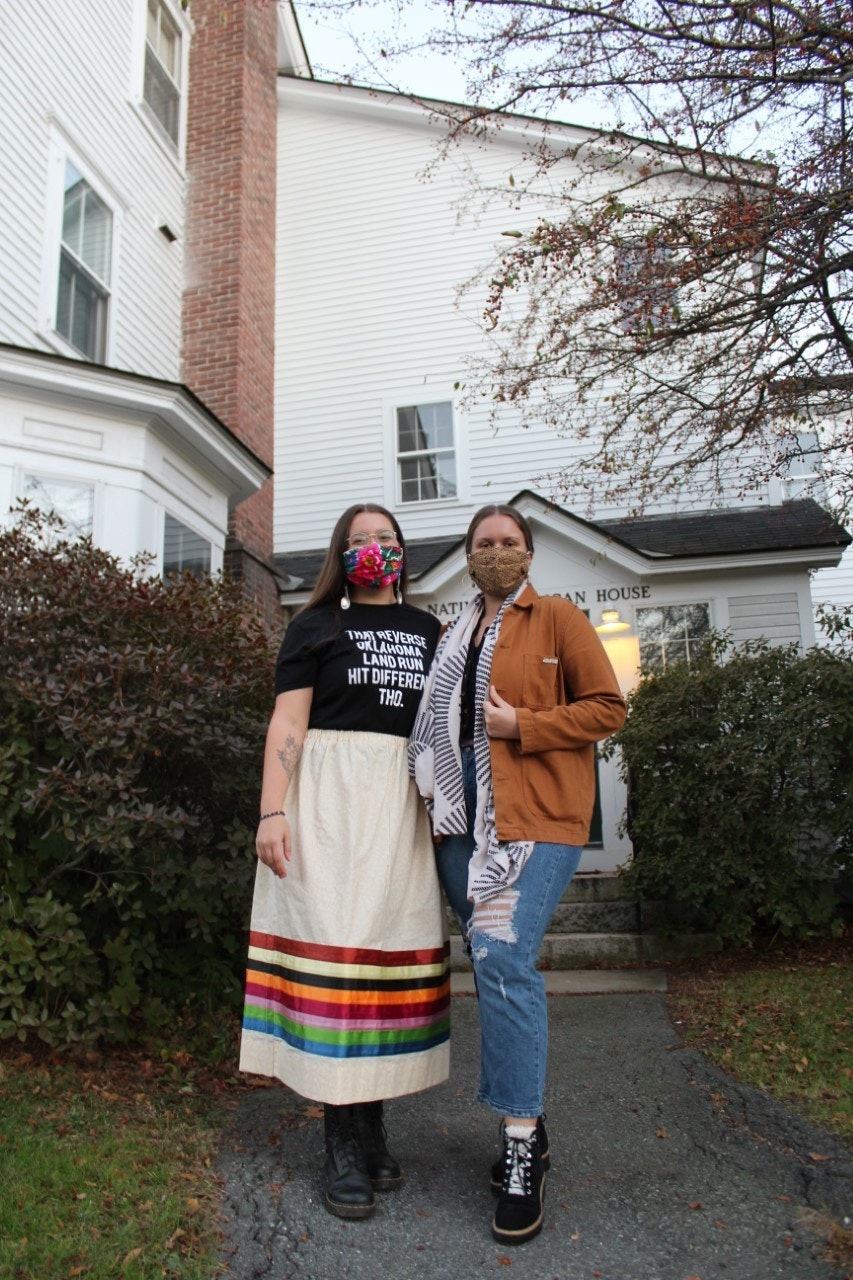
Claire Young ’21 and Elizabeth Coleman '21 pose in front of the Native American House.
The show, which debuted last year, faced new challenges this year due to the remote format. Rather than walk down a runway, NAD co-president Steven Jump ’21 photographed students on campus in front of the Native American House, and students off campus submitted their own photographs and videos — a longer time commitment compared to modeling on the night of the show.
Despite the obstacles posed by the virtual format, student organizers noted that the program’s turnout, which saw 80 viewers during its Facebook livestream and has since attracted over 1,000 views, surpassed their expectations.
“It exceeded my expectations because I wasn't really sure what to expect,” NAD co-president Alayah Johnson-Jennings ’21 said. “We were trying to figure out earlier in the term — what are we going to do for the fashion show?”
Johnson-Jennings noted that NAD leadership had discussed featuring photos of students on social media or creating a video before they ultimately decided on a livestream. She added that the livestream came with the benefit of allowing participants to share the link with family members and alumni, a component that she said was “really cool.”
Additionally, the event’s virtual format allowed for a guest to call in via Zoom to host the show. Powell said that as the students brainstormed how to successfully go virtual, one of the ideas that came to the forefront was a live component with an emcee. The group immediately thought of Neptune.
“[Neptune] quickly came to the front of everyone's mind as someone who knows a lot about fashion but also speaks and is active in terms of issues of representation for Indigenous peoples and the LGBTQ community,” Powell said.
Young said that she “loved” hearing about Neptune’s story as a nonbinary transgender individual, as well as hearing about their experience in fashion and encouraging people to “find their confidence.”
In preparation for the show, all students interested in modeling who lived near campus were invited to the Native American House, where Powell and some of the participants brought Indigenous fashion and jewelry items for those who wanted to partake in the show.
Young, who is Choctaw, selected earrings and a ribbon skirt made by Choctaw artists to wear for the fashion show. She also brought some of her own clothing, such as a hoodie with the phrase “You’re on Native Land” on it, to share with the student-models.
“It was very communal,” she said.
After the show, a Q&A allowed viewers to interact with the panelists, including Neptune, Hood and NAD organizers and four of the models. Questions dealt with topics such as how Native students can gain the confidence to wear Indigenous clothing around campus, and when and how non-Indigenous individuals can wear Native clothing.
“It's my philosophy that if something is being sold by an Indigenous person to non-Indigenous peoples, then you are allowed to wear that item,” Neptune responded. “There's so much more behind that — of course, traditional regalia is not something for outsiders to typically partake in, but things like beaded earrings. You can buy those and support Native artists.”
Young said that she thought the show did “an excellent job” of showing that modern Indigenous fashion is something that “anyone can participate in.”
“This was just a great opportunity for our Indigenous community here on campus to find that confidence to rock our looks and to be ourselves,” Young said. “I know that sometimes when I wear a ribbon skirt around campus, there may be some looks, and that's OK. Being confident in who we are, in the fashion that we choose to wear, is so important.”
At the end of the event, Neptune announced that Daniel Modesto ’24 was the winner of the mask competition leading up to the fashion show. Modesto will win a cash prize.

Daniel Modesto '24 wearing his winning mask, inspired by "Tecuani," an Indigenous dance performed by groups in southern Mexico.
Modesto, who is affiliated with the Mixtec tribe, wrote in his entry for the competition that his mask’s design was inspired by Tecuani, a dance performed by many Indigenous groups in southern Mexico. He explained that the dance, in which the dancers dress up as jaguars, recounts the history of two Indigenous groups fighting.
“It was very cool to see [Modesto’s] Indigenous culture play a role in the actual design of the mask that he made with his own hands,” Young said.

